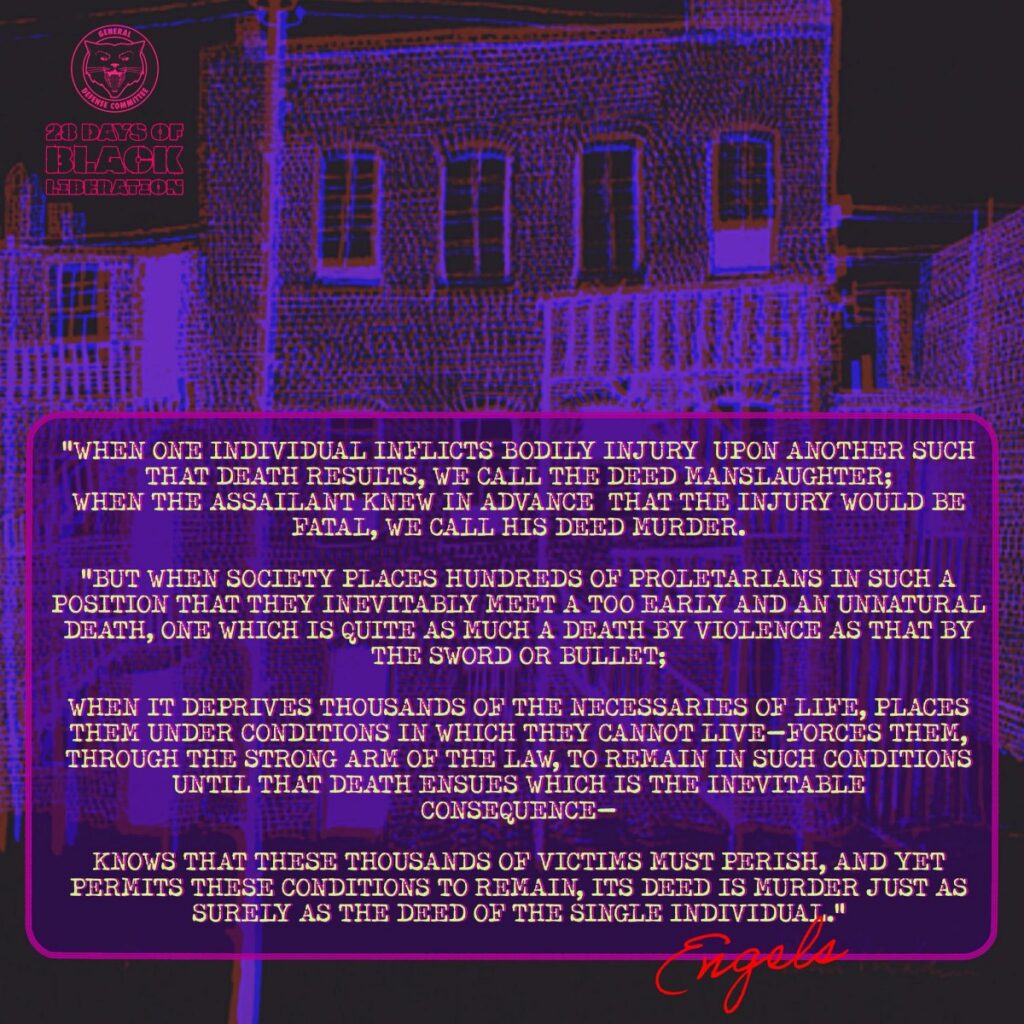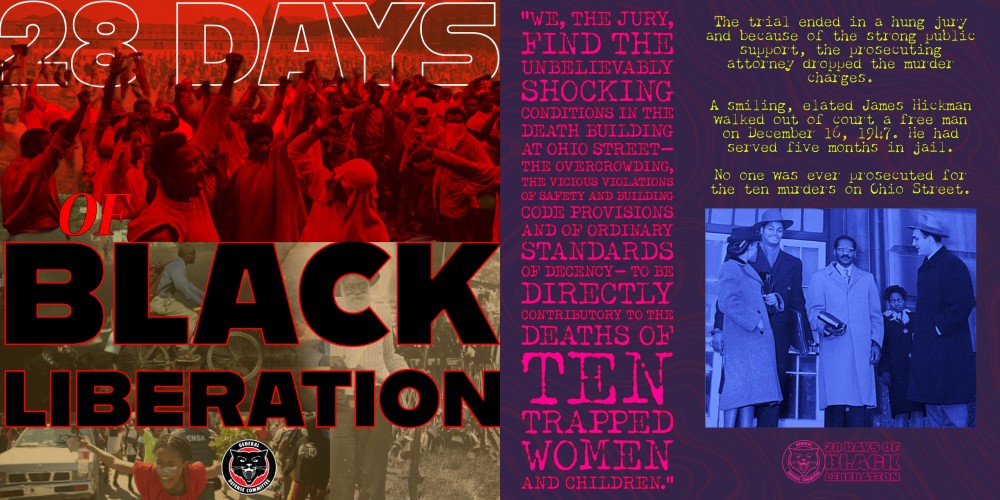28 Days of Black Liberation 2025 series
The inquest into the ten deaths on Ohio Street would involve five public hearings, only two of which would take place before the murder trial of James Hickman, but the horrendous conditions, neglect by public authorities, and personal stories of tragic loss would be disseminated throughout the city by Chicago’s five daily newspapers. Public support for Hickman had emerged across the country. Working class people identified with the terrible living conditions Hickman had endured.
The tests had proved that arson was the cause of the fire. Racial covenants, arson, mob violence, landlord greed, and the indifference and corruption of the city authorities created crises for Chicago’s Black community.
“In July alone more than 200 families were evicted from their homes and, presumably, most of them must have found shelter in the homes of other people, relatives and friends. This is the explanation for 10 people or 15 people to a room in many areas of the city.”
We, the Jury, find the shocking conditions in the death building at Ohio Street—the overcrowding, the vicious violations of safety and building code provisions and of ordinary standards of decency—to be directly contributory to the deaths of ten trapped women and children. The trial ended in a hung jury and because of the strong public support, the prosecuting attorney dropped the murder charges. A smiling, elated James Hickman walked out of court a free man on December 16, 1947. He had served five months in jail.
No one was ever prosecuted for the ten murders on Ohio Street.

Under capitalism, housing is treated as a commodity, an investment; not as a human need. We know the struggle against landlords is a place where workers must confront capitalism.
Gentrification; displacing the working class, disproportionately Black, Latine, and working class immigrant peoples is enforced by the police who carry out evictions and push out the poor. The exodus of people from cities they can no longer afford to live in and their vunerable living conditions make it clear that cities are not neutral – they are a battleground. Class struggle exists everywhere housing exists in the United States. We must fight to win!

